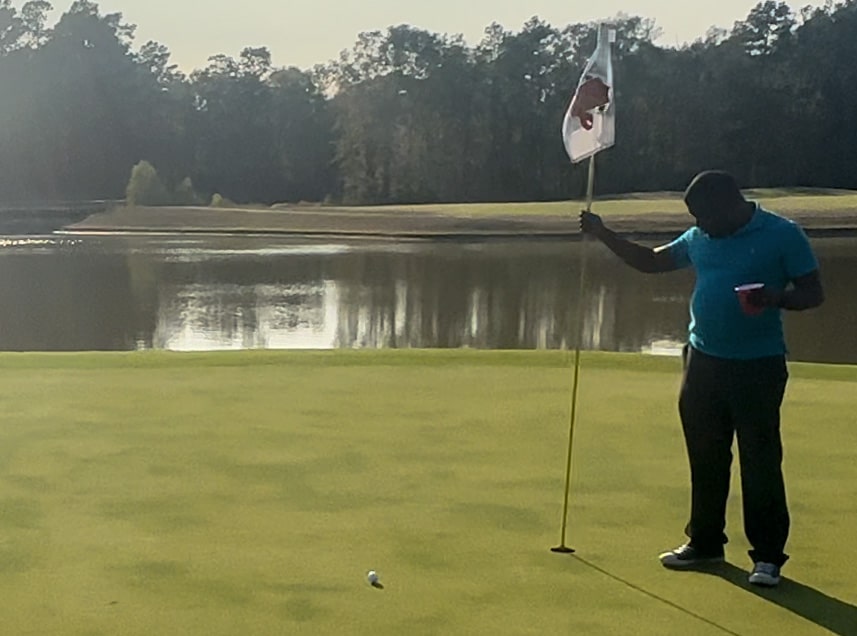The Hidden Power of Putting
Putting often gets ignored, but it can be your game-changer. Whether you casually swing clubs on weekends or aim to turn pro, honing your putting skills is vital. Here’s a breakdown of five solid techniques to help elevate your game, answer popular questions, and share tips for sinking more putts.
1. Nail Your Stance and Alignment
Your putting position lays the groundwork for each successful stroke. Get this right, and even beginners can compete. Here’s how to fine-tune your stance:
- Foot Position: The feet should be shoulder-width apart for stability.
- Posture: Slightly bend your knees while keeping your back straight.
- Grip: Maintain a light, relaxed grip to control the club easily.
- Eye Position: Ensure your eyes sit directly over the ball. This critical alignment aids in accurate aiming and keeps your stroke true.
Common Query: What’s the ideal stance?
Many golfers wonder about height. Standing tall with a slight knee bend gives the best balance and control.

2. Embrace the Pendulum Swing
Consistency thrives in putting, much like a pendulum: always smooth and steady.
- Main Focus: Let your shoulders do the work; avoid excessive wrist movement.
- Steady Tempo: Your rhythm is vital. Keep it uniform in both backstroke and follow-through.
Fun Fact: PGA Tour stats reveal that golfers who maintain a steady tempo consistently score more putts, leading to fewer three-putts overall.
Common Query: How can I prevent wrist break?
A grip that minimizes wrist action, such as the “claw grip” or “cross-handed grip,” can help create a more shoulder-driven stroke.
3. Master Distance Control with Gentle Hands
Controlling your distance is as essential as targeting. Adopt “soft hands”—apply light grip pressure—to enhance your feel for the ball.
- Key Strategy: Practice lag putting; get the ball close from longer distances.
- Follow-Through Matters: Your follow-through should match your backstroke. A short backstroke paired with a longer follow-through enhances control overall.
Common Query: How can I avoid cute short putts?
Many get caught leaving putts short. Visualize rolling your ball one or two feet past the hole for a better result. It encourages a confident, smooth stroke.
4. Hone Your Green Reading Skills
Landing that perfect putt depends heavily on understanding the green’s nuances. Green reading involves deciphering slopes, speeds, and grain to foresee ball movement.
- View from Every Angle: Circle your ball to analyze the slope. Different viewpoints yield better insights.
- Get Acquainted with Green Speed: Practice gauging speeds before your game. Each green reacts differently!
Impressive Statistic: Golf Digest found that players who survey greens from multiple angles up their success rate by 25% on 10-foot-plus putts.
Common Query: What’s the best way to read breaks?
Identify the highest point on the break (the “apex”). Aim here instead of the hole, allowing for a beautiful curve towards your target.
5. Train for Pressure Putting
Crucial last-minute putts often tower as the toughest. Training under pressure is key.
- Create Pressure Scenarios: Challenge yourself to make tricky putts with consequences for misses.
- Establish a Routine: A solid pre-putt routine boosts confidence and calms nerves.
Tried-and-True Tip: Practice short putts (3-6 feet) using your routine each time. Regular practice builds automaticity for tension-filled moments.
Level Up Your Putting Game!
Elevating your putting involves mastering your stance, perfecting the pendulum swing, controlling speed, reading greens expertly, and practicing under pressure. With these handy tips in your arsenal, you’ll notice remarkable shifts in your game. Plus, they’re easy to pick up, regardless of your skill level.
It’s time to implement these smart strategies in your next practice! Whether you’re looking to shave strokes or show off to your friends, nailing these putting fundamentals will definitely take your green game to the next level. Happy putting!
FAQ
Q1: What are the five tips to improve my golf putting technique?
A1: The article discusses five proven tips, including maintaining proper grip, mastering alignment, controlling distance, practicing consistency, and developing a pre-putt routine.
Q2: How important is grip in golf putting?
A2: Grip is crucial as it influences your control and feel of the putter, impacting your overall accuracy and reliability during putting.
Q3: What role does alignment play in sinking more putts?
A3: Proper alignment ensures that your putter face and body are aimed at the target line, significantly increasing your chances of sinking the ball.
Q4: How can I practice consistency in my putting?
A4: You can practice consistency by repeating your putting routine, focusing on your stance and stroke mechanics, and regularly placing from various distances to develop muscle memory.




Leave a Reply